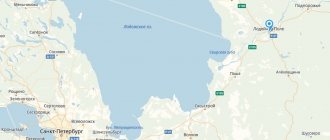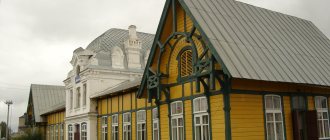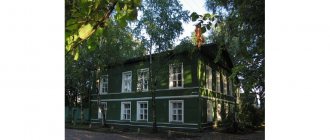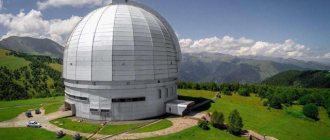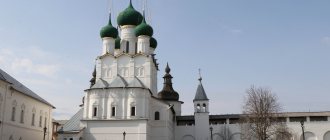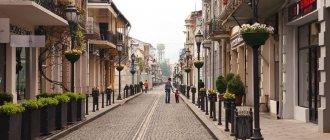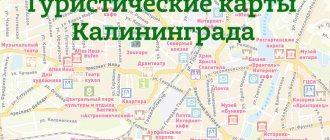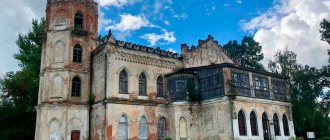Briefly about the city
The city of Lodeynoye Pole is located in the east of the Leningrad region, on the left bank of the Svir River. Important roads pass through the city:
- R-21 "Cola" - St. Petersburg - Murmansk;
- A-114 - Vologda - Novaya Ladoga;
- 41K-001 - Lodeynoye Pole - Vytegra (unofficial name Arkhangelsk tract).
The railway connects Lodeynoye Pole with St. Petersburg and Murmansk. The Svir River is an important water transport artery providing navigation between the Baltic and the White Sea.
Urban development stretches from west to east for 8 km, from west to south - for 3.5 km. The population does not exceed 20 thousand people.
Lodeynoye Pole is located near the coast of Lake Ladoga
History of Lodeynoye Pole
Lodeynoye Pole appeared on the map of Russia in 1702. Russian Tsar Peter I found this place suitable for organizing a shipyard. Tall masted pines grew on the banks of the Svir, and the residents of the local village have been building river and lake ships since ancient times. In addition, the Olonets ironworks were located not far from Lodeynoye Pole, which made it possible to equip the built ships with weapons at minimal cost. The established shipyard was named Olonetskaya, and a year later the first ships for the Baltic Fleet were launched. The shipyard's distance from the theater of military operations in the Baltic made it possible to build ships without fear of attacks from hostile Sweden.
The frigate "Standard" became the first ship built at the Lodeynoye Pole shipyard
In modern terms, the shipyard became the city-forming enterprise of Lodeynoye Pole. Despite the fact that several shipyards were also founded in St. Petersburg, Lodeynoye Pole retained a leading role in the construction of ships for the navy for more than 100 years. In 1829, the shipyard closed, and Lodeynoye Pole turned into a quiet provincial town.
The importance of the city increased in 1915, when a section of the Olonets railway was laid through Lodeynoye Pole, and the city became an important railway junction. In the 1930s, the Svirlag Correctional Labor Camp Administration was located in the city, and several camps for political prisoners appeared in the vicinity of Lodeynoye Pole.
During the Great Patriotic War the city suffered great destruction. For almost three years, the front line of defense of the Karelian Front passed through Lodeynoye Pole: the city turned into a stronghold consisting of trenches, firing points and dugouts. In the summer of 1944, the front line moved north, and peaceful life began to improve in the city.
Table: how to get to Lodeynoye Pole
Thanks to the intersection of important transport routes, Lodeynoye Pole is accessible to many types of transport.
| Kind of transport | Route | Price | Travel time |
| Electric train | St. Petersburg — Petrozavodsk | from 800 rubles | 3 hours |
| Train | Moscow — Murmansk | from 1700 rubles | about 10 o'clock |
| Bus | St. Petersburg - Lodeynoye Pole | from 550 rubles | 3 hours 40 minutes |
| Airplane * | Moscow — Petrozavodsk | from 1100 rubles | 1 hour 30 minutes |
| Electric train | Petrozavodsk — Veliky Novgorod | from 300 rub. | about 2 hours |
* — the airport closest to Lodeynoye Pole is in Petrozavodsk.
KARJALAN TAZAVALDA! Republic of Karelia
What did I know about Olonets? That there is a museum of Livvik Karelians, that there is a beautiful church on an island in the middle of the river. Perhaps that's all. And I didn’t learn more about the sights. But now, while I was writing these lines, I thought, maybe this is how you should travel? Having compiled a “tourist list” for ourselves, that is, a list of attractions, we try to check in next to these attractions. Is it really that important? Maybe a more valuable experience or experience would be to simply walk around unfamiliar places without rushing anywhere? Feeling the mood of a place and the people living in it?
In a word, that’s what we did – we decided to just take a walk around Olonets. And both attractions that I knew about greeted us! We simply drove into Olonets, drove towards the center, turned slightly to the side and decided to stop to park the car and continue on foot. We got out of the car and... there it was, that very “church on the island”!
From the shore there is a beautiful view of the Olonka River and the outskirts of Olonets:
From the church we walked towards the center. Miracles happen. Here is the museum of Karelian-Livviks:
True, this is where the miracles ended, the “harsh truth of life” began. The museum is closed! No not like this. MUSEUM – CLOSED!!! Because the museum has a day off on the weekend. Go to museums during working hours! This is the favorite entertainment of all regional museums. They work on weekdays and during business hours. The question is, who are these museums for? However, the question is rhetorical.
And in front of the museum there is such a column, which in hot summer weather reminded of winter.
Santa Claus in Karelian - Pakkaine. Literally – Frost.
We didn’t make it to the museum, but oh well, it doesn’t matter, we’ll just take a walk. Here and there there are also signs in Karelian.
In the very center, workers are building a stage for an evening concert. Let me remind you that all this is happening on June 12 (and, for the sake of history, 2014 - editor's note).
There was a fair nearby, but maybe it’s permanent here, I don’t know.
Meanwhile, I already want to eat, after all, it’s already about 16 hours. And I see on the neighboring building a suspicious sign “Dining No. 5” or “No. 3” or “No. 4”. I somehow forgot what number it was, but I didn’t bother to take a photo, my thoughts were all on food. The appearance of the sign and the building itself reminded me of the Soviet Union, which doesn’t quite fit with my ideas about comfort, coziness, service, etc., but it doesn’t spoil my appetite at all, because it fits perfectly with my ideas about the quality of food. So we decided to come in.
The sign did not deceive, it is 101% true!!! Small queue. On the wall there is a “Menu”, on an A4 piece of paper, lovingly written with a pen. Behind a glass display case are a couple of salads and pastries. There are quite a lot of baked goods, though. And, of course, there are wickets. There are cutlery in glasses in the display case, square tiles on the floor, cooks in white coats are working in the background... oh, USSR, nostalgia, hello, 1980s!!!
We take the tray and get in line. We learn the menu by heart so as not to delay the canteen workers and the patients standing behind you in the queue. Since the dish you chose is probably no longer there, and you need to immediately name another one, and not run to the end of the line and study the menu again.
We learn the menu by heart so as not to delay the canteen workers and the patients standing behind you in the queue. Since the dish you chose is probably no longer there, and you need to immediately name another one, and not run to the end of the line and study the menu again.
The interior is equally unpretentious. Everything is very simple, yet the tables are clean, the compote is delicious, the cabbage soup is excellent, the cutlets with rice are very edible! But I don’t understand what’s wrong with the gates! Correct wickets are baked from rye dough. The dough turns out quite dark and gray. Here the dough is light, not wheat, of course, but much lighter than ordinary rye. And taste! The main thing is taste! The taste of the gates is completely different. Yes, they are quite edible and even tasty. But they are sweet, and the dough tastes very similar to shortbread. But ordinary rye wickets are not at all sweet and the dough is neither shortbread in taste nor consistency. In general, the wickets were tasty, but some “non-wicket” wickets.
After walking around the market a little more, we understand that we need to direct our steps towards the car and head towards the house. I really don’t like driving in the dark.
Then, perhaps, that’s all! However, I will return to Karelia! And I'll be back more thoroughly! But next year.
In the meantime, I went to visit Old Man! Look out for a story about Belarus in the near future. By the way, I will be there from August 18 to 27, not far from Brest. If you want and have the opportunity to drink beer together or take a photo outing, write or call!
Sights of Lodeynoye Pole
Many tourists complain that there are almost no attractions in Lodeynoye Pole. This is partly true. Most of the buildings of historical value were destroyed during the Great Patriotic War. The monuments to the fallen heroes, erected immediately after the war, essentially became the main and mournful attractions of the city. And in the vicinity of Lodeynoye Pole, surrounded by majestic northern nature, ancient monasteries have been preserved.
Monument to Peter I
The ancient obelisk on the banks of the Svir is one of the few monuments to the pre-revolutionary history of the city. According to legend, in this place at the beginning of the 18th century there was a house in which Peter I stayed during his visits to the Olonets shipyard. The house was temporary and, naturally, has not survived to this day. After the abolition of the shipyard, a local merchant decided to preserve the memory of the emperor-shipbuilder and erected a memorial sign at his own expense.
The obelisk to Peter I was installed in a picturesque location on the river bank
40 years later, the majestic building of the Cathedral of Peter and Paul appeared next to the obelisk. This beautiful temple, built in the classicist style, was a true decoration of Lodeynoye Pole, but the cathedral has not survived to this day. During the Great Patriotic War, the temple was badly damaged by artillery shelling, and soon after the war the ruins of the cathedral were dismantled. Now the only reminders of the temple are the worship cross installed in its place and old color photographs.
The image of the Peter and Paul Cathedral was preserved thanks to the works of the famous photographer Prokudin-Gorsky
It is still unclear whether this temple will be restored in the future. As for the house of Peter I, city authorities have long declared their intention to restore this historical object. Certain work on landscaping the area is already underway: a number of small architectural forms depicting ship guns and anchors have been installed.
Address: st. Uritsky, 1.
Park "Svirskaya Victory"
The memory of the Great Patriotic War in Lodeynoye Pole is preserved by the Svirskaya Victory Park. In a sense, this memorial arose spontaneously immediately after the front line moved away from the city. At the site of the most fierce battles there remained mass graves of Soviet soldiers, trenches, dugouts, places for firing points, and piles of mangled equipment. It was decided to immortalize these evidence of heroic deeds in the form of an open-air museum. In the Soviet Union, this park became one of the very first memorials dedicated to the Great Patriotic War.
On one of the monuments the text of the order of the Supreme Commander-in-Chief is engraved, and on top there once stood a figure of Stalin
Memorials were built on the site of mass graves. Personal monuments and gravestones were erected for individual heroes. The places of the most fierce battles are marked with signs. Pavilions were built for the exhibition of technology. For unknown political reasons, the park was closed as a museum complex in 1951. The pavilions with equipment have been liquidated. The exhibits were taken to other museums. All that remained were memorials and quiet, sad alleys.
Address: Lenin Ave., 122.
Museum of Local Lore
After the liquidation of the Svirskaya Victory museum complex, the only building left in the park was converted into a local history museum in 1968. The museum's collection contains about 17 thousand exhibits reflecting the history of the Lodeynopolsky district from the primitive era to the present. The museum staff paid special attention to the period of the Great Patriotic War and the birth of the city. For example, the hall displays a model of a shipyard, which shows three stages of ship construction: laying the keel, manufacturing the longitudinal-transverse set and the finished hull of the ship.
Before the opening of the local history museum, the building housed a club
Information about the museum:
- address: Lenin Ave., 122;
- Opening hours: in summer - Wed-Sun from 10:00 to 17:00; other seasons - Tue-Sat;
- ticket price: 25–45 rub.
Holy Trinity Alexander-Svirsky Monastery
This Orthodox monastery appeared in the local forests at the end of the 15th century. The monastery was founded by the Russian ascetic Reverend Alexander Svirsky. According to the lives of the saints, Alexander Svirsky spent more than 25 years in seclusion, indulging in fervent prayers and fasting. As a reward for such asceticism, Alexander was endowed with the gift of healing the sick. The fame of Alexander Svirsky’s miraculous abilities attracted local residents and Orthodox pilgrims to the monk. Believers built cells and settled next to their spiritual father. Thus, a monastic community gradually arose, and Saint Alexander became abbot of the monastery.
The Alexander-Svirsky Monastery is located on the shore of a picturesque lake
Most of the monastery's buildings date back to the 17th–18th centuries. The bell tower is the tallest and youngest building of the monastery, built at the beginning of the 20th century. The Church of the Intercession is the only building that remembers the founder of the monastery, Alexander Svirsky. This temple was built with the direct participation of St. Alexander in 1533. According to legend, the Holy Trinity appeared to Alexander at this place. In memory of this event, the place of the phenomenon, marked with a special plaque, has been preserved inside the temple. The relics of St. Alexander of Svirsky are also buried here.
The incorrupt relics of St. Alexander are considered one of the best preserved remains of Russian saints. During the Civil War, a commission was even created that was supposed to recognize the incorruptibility of the relics as a fraud. However, authoritative experts confirmed the authenticity of the remains. Then, for 70 long years, the body of Alexander Svirsky disappeared. The remains were found in the late 90s in the storage facility of the Military Medical Academy in St. Petersburg. The staff of the institution secretly kept the relics of Alexander under the guise of an exhibit of the anatomical collection.
Information about the monastery:
- address: village of Staraya Sloboda, 21 km north of Lodeynoye Pole;
- Opening hours: daily from 8.00 to 20.00.
Vvedeno-Oyatsky Monastery
Another spiritual place associated with the life of Alexander Svirsky was the Vvedeno-Oyatsky Monastery. The saint was originally from these places, and his parents are buried here on the territory of the monastery. The exact time of the appearance of the monastery is unknown. It is quite possible that the monastery arose much earlier than the Alexander-Svirsk monastery. Until the beginning of the 19th century, the monastery was exclusively wooden. Stone construction significantly transformed the appearance of the monastery. The monastery is famous for its healing radon spring, which cures serious illnesses.
The architectural appearance of the monastery buildings clearly shows the features of classicism.
Information about the monastery:
- address: Oyat station, about 40 km southwest of Lodeynoye Pole;
- Opening hours: daily from 9.00 to 19.00.
Intercession-Tervenichesky Monastery
This convent is the youngest in the area. A monastic community appeared in the village of Tervenichi in 1991, and 6 years later the highest clergy allowed the creation of a monastery here. In just over 20 years, the builders managed to create an architectural ensemble that is not inferior in beauty to the more ancient neighboring monasteries. The organization of the monastery has a clear layout and consistent style. Even if a visitor to the monastery is far from religion, the elegant architecture will undoubtedly bring aesthetic pleasure to anyone. The highlight of the monastery is the Assumption Church, in the lower part of which there is a prayer hall in the form of a cave temple.
All buildings on the territory of the monastery seem light and airy
Information about the monastery:
- address: Tervenichi village, st. Nagornaya, 30; 75 km southwest of Lodeynoye Pole;
- Opening hours: daily from 9.00 to 19.00.
Polenovsky places near Akulova Gora
Shark Mountain is a small village 30 km from Lodeynoye Pole. The famous Russian artist Vasily Polenov spent part of his life here. The Polenov family owned the Imochenitsa estate near Shark Mountain. Once upon a time there was a three-story wooden house here, now on this site there is a temple in the style of northern wooden architecture. Polenov first came here at the age of 10, and since then Akulova Mountain has become a place of inspiration and a living setting for the artist’s paintings. Time has not preserved any traces of the estate, except for the cedar grove planted by Polenov.
The temple was built on the site of the Polenovs' estate house
The memory of Polenov has been preserved largely thanks to the efforts of local artists Gretsky. This married couple organized an unofficial museum of the artist’s work in their home. Reproductions of Polenov are on display here. In addition, Yuri and Irina Gretsky are engaged in restoring the appearance of Polenov’s former estate. At the expense of the family, a wooden temple was built, the paintings of which were also done by the Gretsky couple.
Address: Akulov Gora village, 35 km south of Lodeynoye Pole.
Photo gallery: Polenov’s paintings painted in Shark Mountain
The painting “Oyat River” was painted by the artist in 1883
One of the artist’s few winter landscapes is dedicated to the village of Imochenitsa
The image of the beloved river appears for the second time in the painting “Crossing the Oyat”
Nizhne-Svirsky Nature Reserve
Lodeynoye Pole is located in a unique natural area. Local swamps and forests serve as a haven for migratory birds, and valuable fish species spawn in the lower reaches of the Svir. To protect the natural world of the lower reaches of the Svir, a reserve was created in 1980, which is open to everyone. For ecotourism lovers, the administration of the reserve has developed five routes with a total length of over 100 km. It is impossible to visit all the interesting places in one day, so the reserve offers accommodation in its own hotel especially for guests. Visiting the reserve requires prior application. All movements within the environmental protection zone are carried out only when accompanied by reserve staff.
In the Nizhne-Svirsky Nature Reserve there are areas where tourists can observe the life of bears
Information about the reserve:
- visitor center address: the village of Kovkenitsy, 45 km southwest of Lodeynoye Pole;
- Opening hours: Mon-Fri 9:00–17:00;
- cost of services: sightseeing tour - 400 rubles; excursions along eco-trails - from 600 to 2200 rubles. for a group of up to 7 people.
Pottery crafts of Alekhovshchina
The main souvenirs of Lodeynoye Pole are considered to be Oyat ceramics. Pottery has long been a traditional occupation of the Vepsians, the local indigenous inhabitants. One of the centers of pottery making is located in the village of Alyokhovshchina. The banks of the Oyat River in these places are rich in red clay, which is ideal for making ceramics. The art of Oyat craftsmen was so high that their products were used even at the imperial court. A collection of pottery is exhibited at the Alekhovshchina Crafts Center. Here you can not only look, but also buy the ceramics you like.
Oyat ceramics include not only dishes, but also human figurines and animal figurines.
Information about the center:
- address: c. Alekhovshchina, st. Alekhovshchinskaya, 20.
- Opening hours: Mon-Fri, from 10.00 to 17.00.
Village of Verkhniye Mandrogi
The name of this settlement became widely known to tourists in the early 2000s. On the site of a village destroyed during the Great Patriotic War, a tourist center was created that recreated the culture and way of life of the Russian North. Guests can not only look at examples of ancient village architecture, but also stay in one of these houses. The village of Mandrogi has become such a popular place among Russian and foreign tourists that sometimes several cruise ships accumulate at the pier. The complex includes about 60 different objects. Among them:
- forge;
- stable;
- weaving workshop;
- pottery;
- vodka museum
The atmosphere of a Russian village reigns in Mandrogi.
Guests of the village can try to master any craft presented in the village. For this purpose, the center’s staff have developed many different master classes. Visitors show great interest in the “Immersion in the 19th Century” program. The subject abandons all the delights of modern life for several days and lives in a Russian hut, in a rural living environment of the 19th century.
Information about the tourist center:
- address: Verkhniye Mandrogi village, 33 km east of Lodeynoye Pole;
- cost: sightseeing tour - 400 rubles; master classes - from 900 rubles.
Trinity Alexander-Svirsky Monastery
This monastery was founded at the beginning of the 16th century. It was erected on the spot where the Holy Trinity appeared to St. Alexander of Svirsky during prayer.
Today the monastery complex includes several buildings.
- The Church of the Intercession of the Mother of God was built in the mid-16th century. The monument has survived to this day in its original form. This church is an excellent example of the Novgorod style.
- Transfiguration Cathedral. The shrine was built of stone in the mid-17th century.
- Church of Zechariah and Elizabeth, built at the end of the 17th century.
- The Church of St. John of Damascus is a beautiful architectural monument of the early 18th century.
- Church of the Life-Giving Trinity. The shrine was built at the end of the 18th century on the site of the wooden Trinity Cathedral of the early 16th century.
Seasons
Summer is the best time to travel around the Lodeynopolsky district. It is during this period that significant cultural events of the region are held:
- Svir Victory Day - June 23.
- Regional holiday of Vepsian culture “ENARNE MA” - July 7–8.
- City Day is September 15.
- Regional festival "White Mushroom" - September 15.
- Festival “Trinity Fair” with an open-air ethno-fair of craftsmen “Hurry to be friends with craft” - May 27.
In winter, the historical village of Mandrogi becomes a popular tourist center. Here you can celebrate the New Year on a grand scale, ride a horse-drawn sleigh, go hunting or winter fishing. During the school holidays, Mandrogi hosts various themed events for children.
Lodeynoye Pole for children
In the Lodeynopolsky district there are many options for entertaining and educational recreation for children, but two places are especially worth noting:
- Ozerko. This simple name is given to a small lake located within the city limits. Ozerko is a favorite vacation spot for city residents. Clean water, pine trees and sand are perfect for families with children. The beach is free and equipped with changing cabins. Rescue service is working. Ozerko is one of the few reservoirs in the Leningrad region that is allowed for swimming. Address: southwestern outskirts of the city, landmark - Ozerny Lane.
The picturesque shore of Ozerko is perfect for a beach holiday - Mandrogi. The tourist center in Verkhniye Mandrogi offers a large selection of educational entertainment for children:
- mini-zoo;
- quail farm;
- various attractions;
- master classes on folk crafts.
In Mandrogi, even children can try themselves as a ferryman.
The “Taiga Trail” master class is very popular among children. During this course, children learn the rules of behavior in the forest. They learn navigation, making fires and other useful skills.
Recreation options in Lodeynoye Pole
As a rule, tourists do not come to Lodeynoye Pole for the city’s attractions. The majority's interests are focused on monasteries and nature. In this situation, it makes more sense to use Lodeynoye Pole primarily as a base for trips to out-of-town attractions. To visit most interesting places, 2-3 days will be enough. If the traveler has a week, then the travel plan can be drawn up as follows:
- Getting to know the sights of Lodeynoye Pole.
- Trip to the Alexander-Svirsky Monastery.
- Visit to the historical village of Mandrogi.
- Visit to the Vvedeno-Oyatsky Monastery.
- Excursion to the Intercession-Tervenichesky Monastery.
- Inspection of Polenovsky places.
- Ecological tour of the Nizhne-Svirsky Nature Reserve.
Perhaps the most interesting option would be to visit Lodeynoye Pole as part of a river cruise tour to holy places. Most ships depart from St. Petersburg, there are several routes from Moscow. The cruise program includes such famous places as:
- Valaam Monastery;
- Kizhi;
- Old Ladoga.
Travel tips
Before traveling to the Lodeynopolsky district, first of all you need to think about the weather. Internet sources write reassuringly that winter in Lodeynoye Pole is moderately cold. In fact, the temperature in winter drops to 20 degrees below zero. Summer is also not particularly warm: the average temperature in July does not exceed 20 degrees Celsius. Therefore, even in summer, warm clothes will be relevant.
Tourists should be especially careful when going into the forest. The area around Lodeynoye Pole is swampy, so it is better to stick to the official routes. In addition, the forests are home to predatory animals, in particular bears.
Otherwise, tourists in Lodeynoye Pole have nothing to worry about. The city does not have any special negative factors. Thanks to transit tourist flows, the city is well supplied with hotels and food outlets.
Monument to Peter I
A modest obelisk was installed at the beginning of Uritsky Avenue, exactly on the spot where the emperor’s camp house was once located. The monument in honor of Peter the Great was erected at the end of the 19th century with the money of the merchant Safronov.
Emperor Peter the Great was always respected and honored in Lodeynoye Pole. After all, it was thanks to him that the Olonets shipyard began operating here, building ships of excellent quality for the Baltic Fleet. The shipyard very quickly turned Lodeynoye Pole into one of the most prosperous cities in Russia.
The monument is a small stone obelisk, in the center of which is a metal portrait of Peter the Great.
